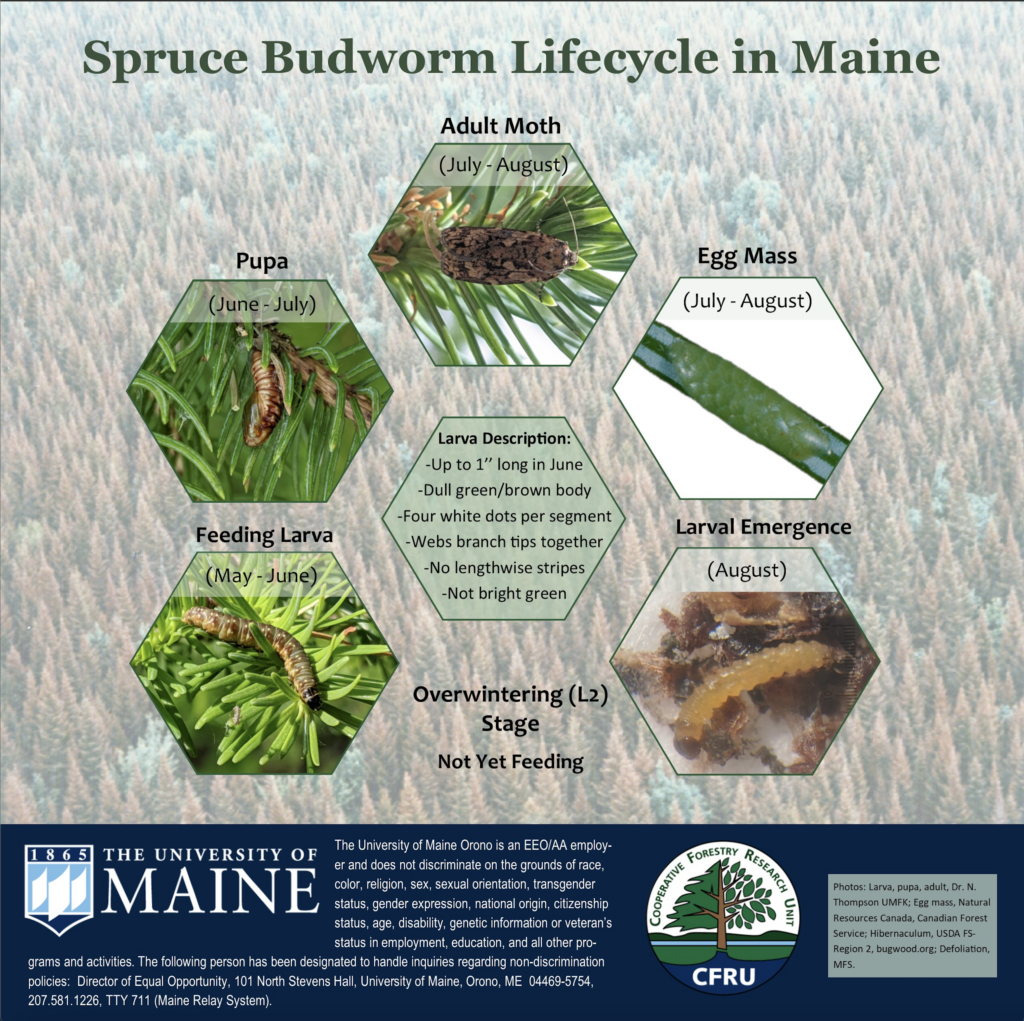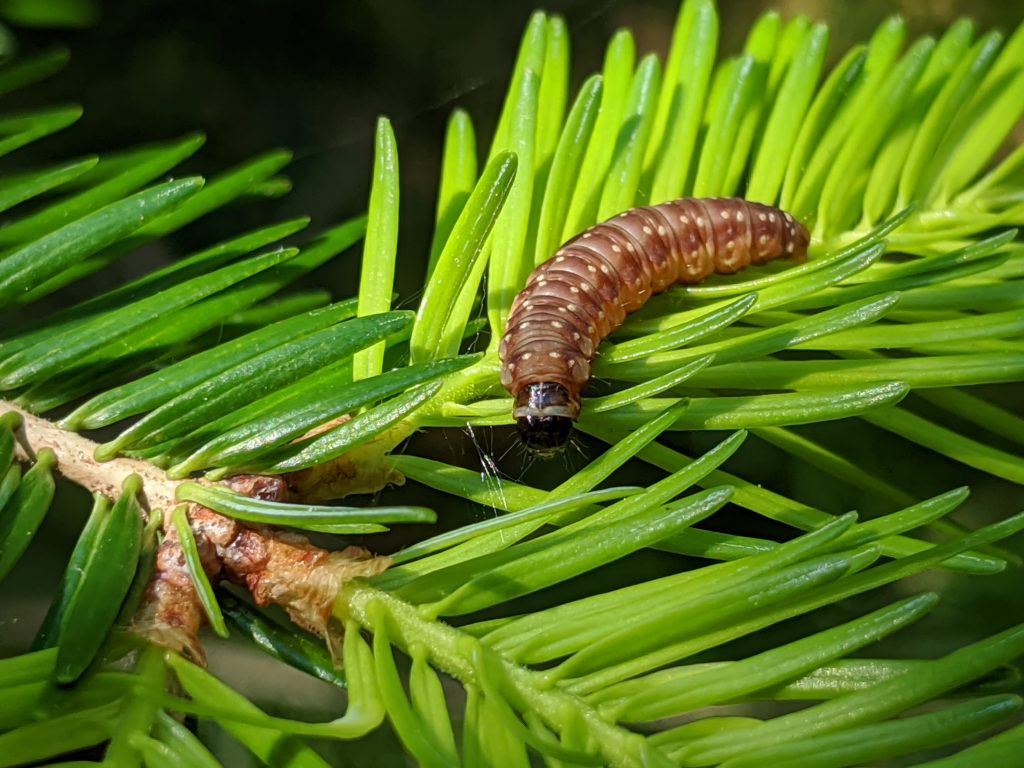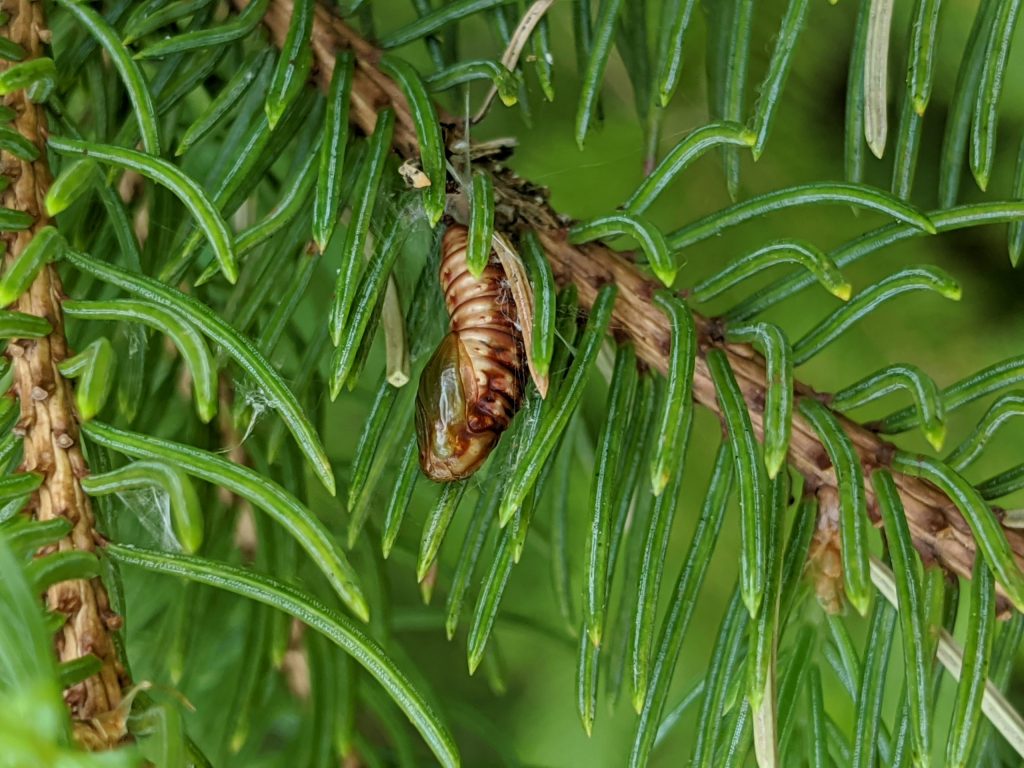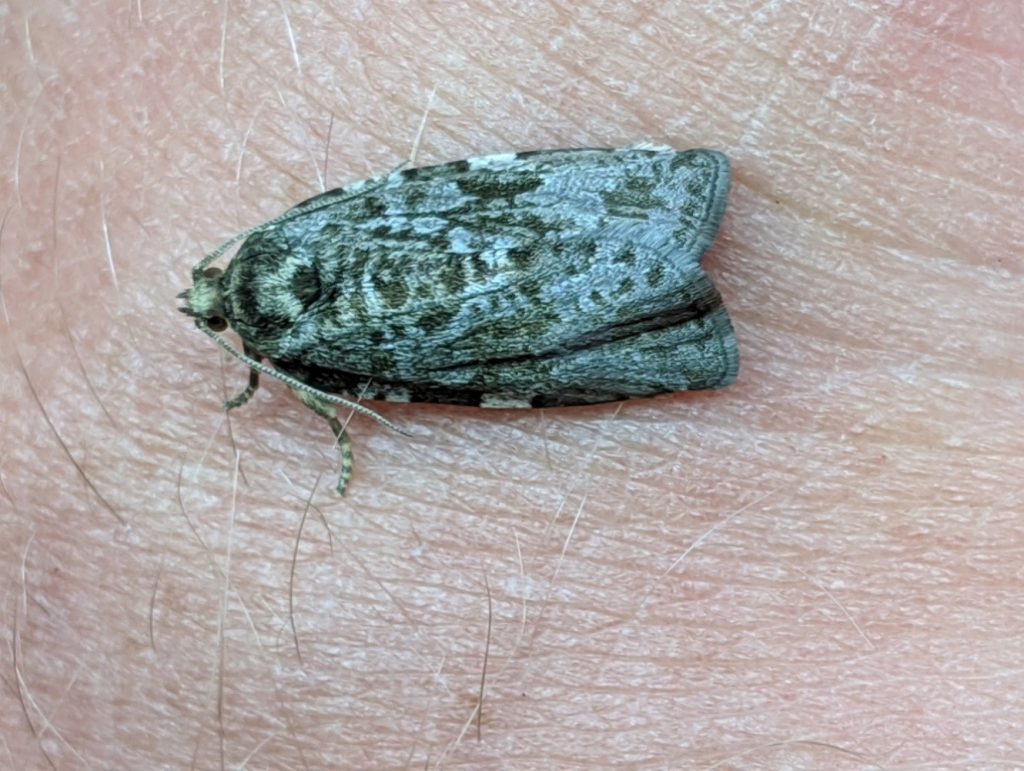What Is Spruce Budworm?
The eastern spruce budworm (Choristoneura fumiferana) is a native insect that causes damage to balsam fir and spruce trees during the larval (caterpillar) stage. Under normal (endemic) conditions, spruce budworm (SBW) populations are so low that this insect can be hard to find in Maine. However, SBW is capable of widespread outbreaks (epidemic conditions) that can cause extensive damage and mortality to Maine’s spruce-fir forests after several years of feeding. During epidemic conditions, defoliation is heavy enough that affected trees produce very little wood and many thousands of trees die. In addition to reduced natural resources and diminished water quality, local employment for those who rely on Maine’s forest-based economy can also be impacted by a SBW outbreak.
What is Spruce Budworm doing in 2025?
SBW populations are increasing in northern Maine. The Maine Forest Service captured building SBW populations in northern Maine through surveys, where roughly 3,400 acres of defoliation was recorded during aerial survey in 2024. The University of Maine Spruce Budworm lab monitored SBW larvae (L2) on tree branch samples and found populations that were at or above the outbreak threshold of an average of seven larvae per branch in northern Maine. When larval populations are at or above this threshold, an outbreak of SBW is likely to occur.
Maine timberland owners and managers in Maine formed the Maine Budworm Response Coalition (MBRC) and are working collaboratively with the Maine Forest Service, Cooperative Forestry Research Unit, and Maine Forest Products Council to reduce impacts from SBW as it builds toward outbreak conditions. The MBRC successfully advocated for funding to implement Early Intervention Strategies (EIS), an approach developed and tested by New Brunswick, Canada to reduce SBW populations below the outbreak threshold.



